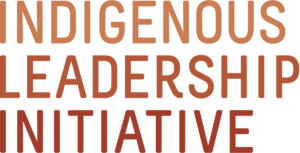A Tool for Sharing Knowledge of Indigenous-Led Conservation
By Frank Brown
I grew up learning to fish from my Heiltsuk knowledge keepers and elders. I saw elder fishers build kelp gardens to harvest herring roe; if the roe wasn’t at least four or five layers thick on the kelp, they left it in the water so the herring stocks continued to grow. And I observed and listened to elders tell stories about our relationship to the fish and the waters all around us.
This knowledge—and the knowledge held by Indigenous Peoples across the continent—has sustained animals, plants, waters and lands for millennia.
Now our stewardship is taking on even greater significance. Studies show that more species are being pushed to extinction by development, yet many have identified a bright spot. A recent United Nations report and a University of British Columbia paper confirm that lands managed by Indigenous Peoples are healthier and more vibrant.
It is more important than ever to share our knowledge. The challenge is how.
A publication called Staying the Course, Staying Alive—Coastal First Nations’ Fundamental Truths: Biodiversity, Stewardship and Sustainability offers a possible model that provides a structure and process that can be adapted and adopted whether you are salmon people or caribou people, mountain people or lowland forest people.
We all have our own Indigenous languages, stories, maps and ways of knowing. This publication shows how we can convey our Indigenous knowledge by asking questions like: What are our harvesting practices? How do our stories guide our actions toward animals? What does our language reveal about our relationship to the land?
We started exploring these questions about a decade ago. I was an advisor to the British Columbia Council on the International Year of Biodiversity. Most of the council members were western scientists. As they drafted a report, I realized it didn’t reflect the Indigenous worldview.
Indigenous Peoples don’t have a word for “biodiversity” in our languages. But we understand the concept on a deep level. We know everything is connected. Our actions have implications. And all is interdependent: We rely on the land, and the land relies on us.
We wanted to convey these core principles as a complement to western science. We began by working with elders from three coastal nations. As we talked about the decline in animals and plants, Gloria Cranmer-Webster (Wikalalisame’ga) from Namgis of the Kwakwaka’wakw said, “We didn’t create this mess, but we have to focus on what has sustained us. We have to stay the course to stay alive. We have to follow our teachings.”
Through many conversations—and many cups of tea—we expressed ancestral teachings as follows:
Fundamental Truth 1: Creation We the Coastal First Peoples have been in our respective territories (homelands) since the beginning of time.
Fundamental Truth 2: Connection to Nature We are all one and our lives are interconnected.
Fundamental Truth 3: Respect All life has equal value. We acknowledge and respect that all plants and animals have a life force.
Fundamental Truth 4: Knowledge Our traditional knowledge of sustainable resource use and management is reflected in our intimate relationship with nature and its predictable seasonal cycles and indicators of renewal of life and subsistence.
Fundamental Truth 5: Stewardship We are stewards of the land and sea from which we live, knowing that our health as a people and our society is intricately tied to the health of the land and waters.
Fundamental Truth 6: Sharing We have a responsibility to share and support to provide strength and make others stronger in order for our world to survive.
Fundamental Truth 7: Adapting to Change Environmental, demographic, socio-political and cultural changes have occurred since the creator placed us in our homelands and we have continuously adapted to and survived these changes.
These truths capture the heart and soul of our relationship to the land.
As more Indigenous Nations design Indigenous Protected Areas and launch Indigenous Guardians programs, we will be increasingly called on to convey our knowledge of the land within our communities and beyond. We can draw on these expressions to shape policy, create space for Indigenous ways of knowing and call for sustained support of Indigenous-led conservation.
Hopefully the approach described in Staying the Course, Staying Alive can provide a useful starting point. It’s a living document, and we encourage Indigenous Nations to make it your own and reflect your traditions.
As Indigenous place-based peoples, we have a duty to pass along our knowledge of the land. Heiltsuk elder Pauline Waterfall explained: “Lessons learned are gifts, and we have the responsibility to share these in order to teach about living in harmony, balance and respect with each other and with nature and its biodiversity.”


